
Forage for Horses – Hay
Expert Advice: Kim Lina Pethahn, an independent feed consultant, wrote this article. The Best Type
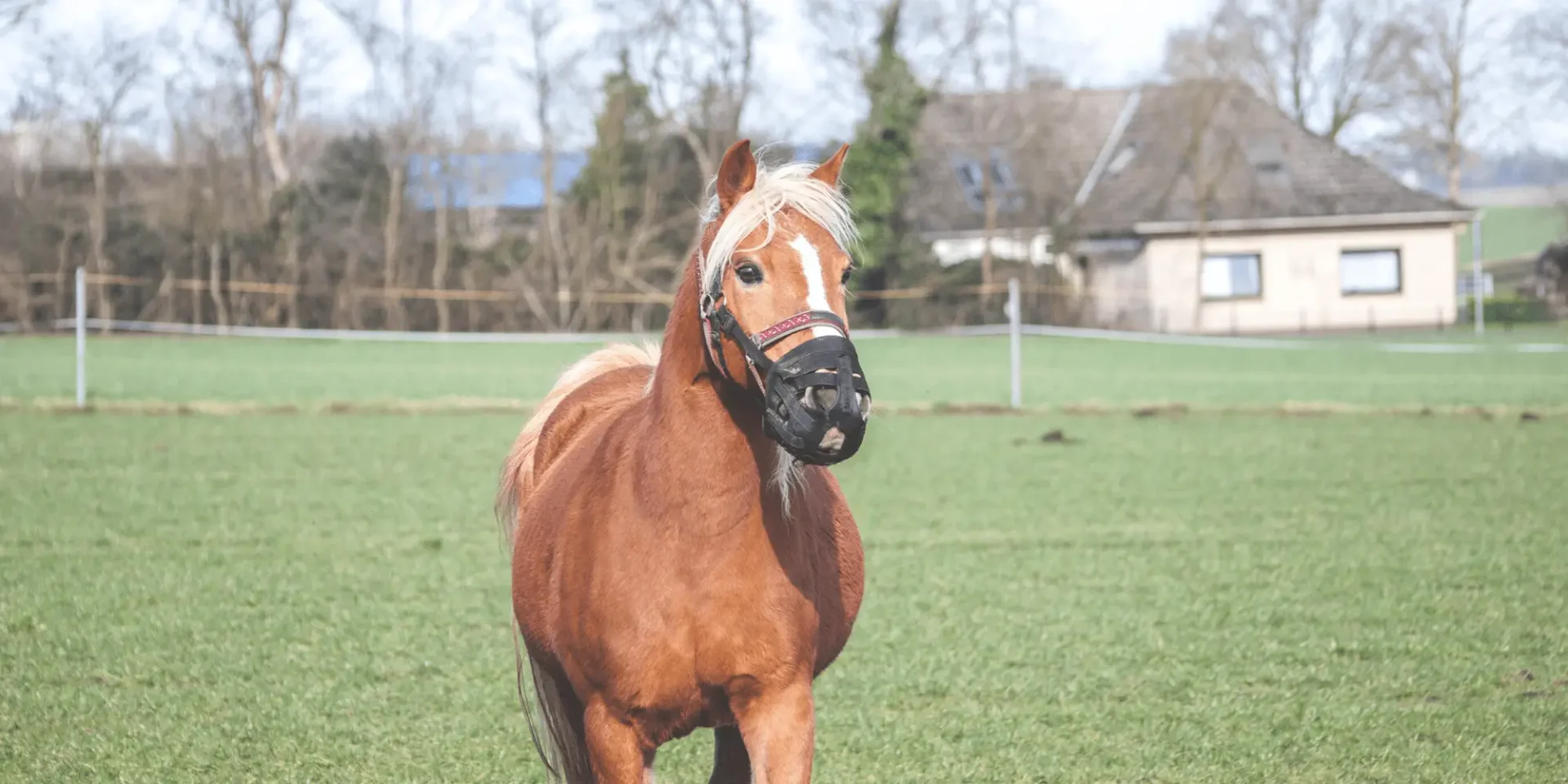
Horses in a herd are living the good life on a field 24 hour a day, every day. It’s a nice idyllic picture, but sadly not always ideal for every type of horse. Easy keepers, such as ponies and breeds that were originally bred on barren lands, often do not profit from plenty of luscious and fructan-rich grass that can either mess up their intestinal tract or fatten them up.
Apart from more exercise, less pasture time and less extra feed, there is another option of keeping the grass out of the horse without removing the horse from the grass, and that is a grazing muzzle.
A grazing muzzle is formed much like a dog muzzle. It is a basket with slits it it to let a small about of grass through. Since the horse is prevented from eating tons of grass, it can now spend more time socializing in the herd.
– Lower grass consumption (by approx. 30%)
– Horses on a diet can still experience a life in a herd
– They get more movement on a field than on a 4×4 sand paddock
– Faster and more hectic grazing
– More stress
– Communication with herd members is limited due to the facial obstruction
– Limited natural herd behavior such as grooming each other
– Risk of injury (Getting trapped on fence or tree)
– It’s not a 24/7 solution
– Grass lengths should be medium to avoid dirt clogging the slits
– Abrasion marks
– Wear and tear of front teeth
Unfortunately, the negatives are many and you should definitely pay enough attention to them, but many only have a negative impact if the management is not right.
Here are some important tips to follow: The drinking trough should be large enough so that horses that wear a grazing muzzle can also drink water, the fences should not have corners where the horse can trap itself, the muzzle should be adjusted to your horse specifically, the horse should be accustomed to it slowly and the muzzle should never stay on the horse 24/7.
However, there are horses that simply cannot come to terms with a grazing muzzle and reflect this in their behavior. In this case, you should look for an alternative.
In general, the grazing muzzle should not be a permanent solution. It would be better to place the affected horse in another herd that has the same needs. Simply shortening the grazing time and feeding a hay-straw mixture the rest of the time would be another alternative. Sometimes just different pasture management or more exercise is enough to keep easy keepers from being overweight. However, in cases of metabolic or gastrointestinal disorders, even more critical thought should be given to how to optimize grazing time.
A square plastic basket with slits that gets attached to the halter.
– Very good ventilation
– Simple attachment
– Easy cleaning
– Covers little of the face, facial expression only slightly restricted
– Opening size always the same
– Smart horses figure out how to graze more through the big openings
– Strong wear and tear on front teeth
– Noseband of the halter must be very low to attach the muzzle
– Chafing on the lips possible
Very open feeding basket made of biothane with neoprene padding.
– Facial expression hardly restricted
– Breathing not restricted
– Grooming w/ other horses possible
– Easy to clean
– Padded
– Adjustable to the head
– Gentle on teeth
– Low risk of injury
– Effectiveness questionable, due to the large openings
– Opening non-adjustable
Grazing muzzle made of soft synthetic fiber with integrated halter and rubber-like bottom plate.
– Gentle on teeth
– Soft, padded
– Small hole at the bottom of the basket
– Hard to clean
– Opening not adjustable, but stretches apart over time
– Clumsy horses get very little grass through the opening at first
– Poor ventilation
Once the decision has been made in favor of a grazing muzzle, it has to be correctly fitted to the horse’s head and the horse should get introduced to it. The manufacturers give out measurements for their products in order to select the correct size. On the horse, you can adjust the strap lengths accordingly and fit it to the head precisely. The cheek pieces should not touch the eye, the noseband or the top edge of the basket itself should have at least 2 fingers of space, and the bottom plate should be two to three inches from the mouth. This way, the lips are not in constant contact with the plate when the horse takes a break from eating.
Once it is perfectly fitted, it is necessary to observe how the horse behaves with it. Every horse will initially try to get rid of the muzzle and has to practice a bit to eat grass through the slits. It is best to let the horse out in the field for only a few minutes in the beginning and gradually increase the time. It should always be observed whether the horse has reached its frustration limit and refuses to eat.
Track your horse’s daily grazing times in the premium version of the Happie Horse App, add all of the related tasks, such as: adding grazing muzzle, start turn out, turn in horses and much more. Is your horse affected by fructan? View the fructan risk at your horse’s location, anytime, from anywhere.
Download the app and try all premium features 7 days for free!

Expert Advice: Kim Lina Pethahn, an independent feed consultant, wrote this article. The Best Type
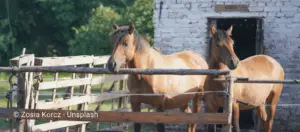
Expert Advice: Kim Lina Pethahn, an independent feed consultant, wrote this article. Which are non-toxic
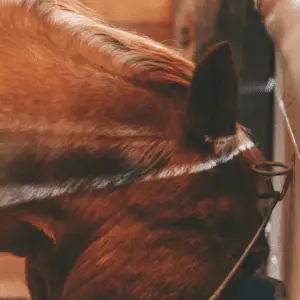
Expert Advice: Kim Lina Pethahn, an independent feed consultant, wrote this article. Valuable and Nutrient-Rich
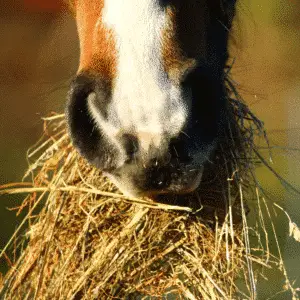
Expert Advice: Kim Lina Pethahn, an independent feed consultant, wrote this article. Having hay available
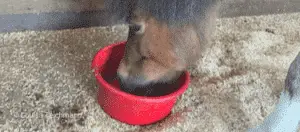
Expert Advice: Kim Lina Pethahn, an independent feed consultant, wrote this article. Offering the Necessities

Expert Advice: Kim Lina Pethahn, an independent feed consultant, wrote this article. The Nutritional Benefits